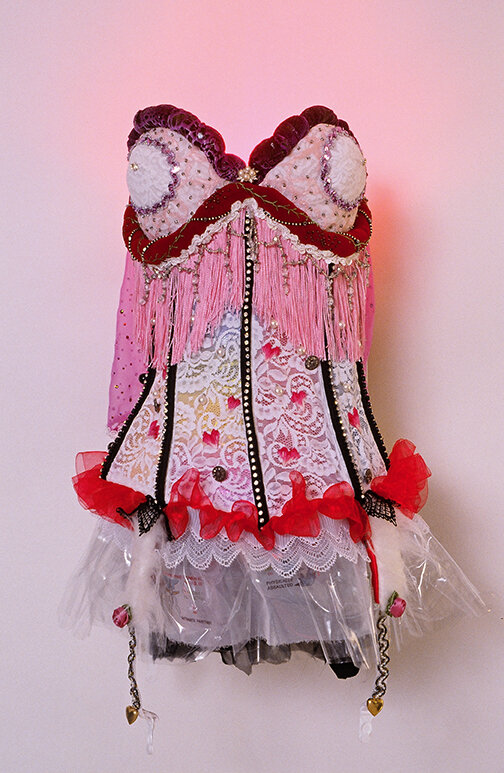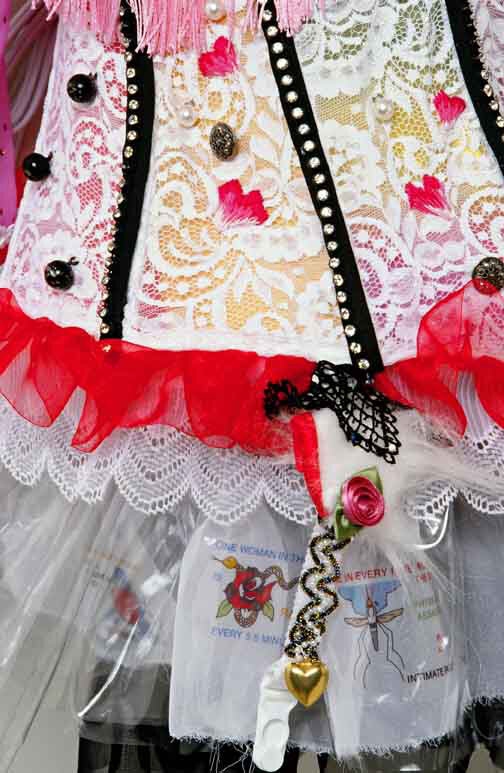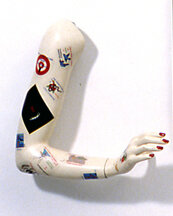Cover Up (2004). Mixed Media. 42” x 14” x 14”.
What if women were to choose solidarity over exploitation, voice over silence, and visibility over shame, wearing their collective scars like tattoos in an act of defiance for all to see? What if, instead of participating in a culture that rewards ownership over relationship, women and men were to confront ideas of profit embedded in relationship by wearing tattoos designed to disrupt the persistent commodification of women’s bodies? What if tattoos displayed the harsh reality of a culture in denial, depicting the staggering numbers of women who are raped and battered each year?




Tattoo Project
“Cover Up” critiques pop culture by referencing Janet Jackson’s Super Bowl mishap recorded on national TV. Instead of wardrobe “malfunction,” a term intended to convey localized mechanical failure; “Cover Up” examines widespread cultural dysfunction. Reading as an altar of desire, the body of “Cover Up” is wired with red and pink bulbs, casting a warm and seductive glow onto the viewer.
Below the torso is a shelf containing shards of mirrored glass assembled into miniature sculptures. The fractured mirrors provide opportunity for reflection, while addressing a cultural preoccupation with the body. The placement of the shards in relation to the headless torso enables the viewer to think about the destructive nature of body worship, without the presence of a mediating head. The bouquet of roses extends the metaphor, suggesting that the body is nothing more than a decorative vessel. The vinyl skirt on the body of the torso features a series of decals (or tattoos) that tell another story regarding the hidden culture of violence against women.

Website: www.antishutup.com

Waterbase tattoo and inkjet print. (2006). 10 x 12"









Mannequin with tattoos. (2006). Mixed media.
